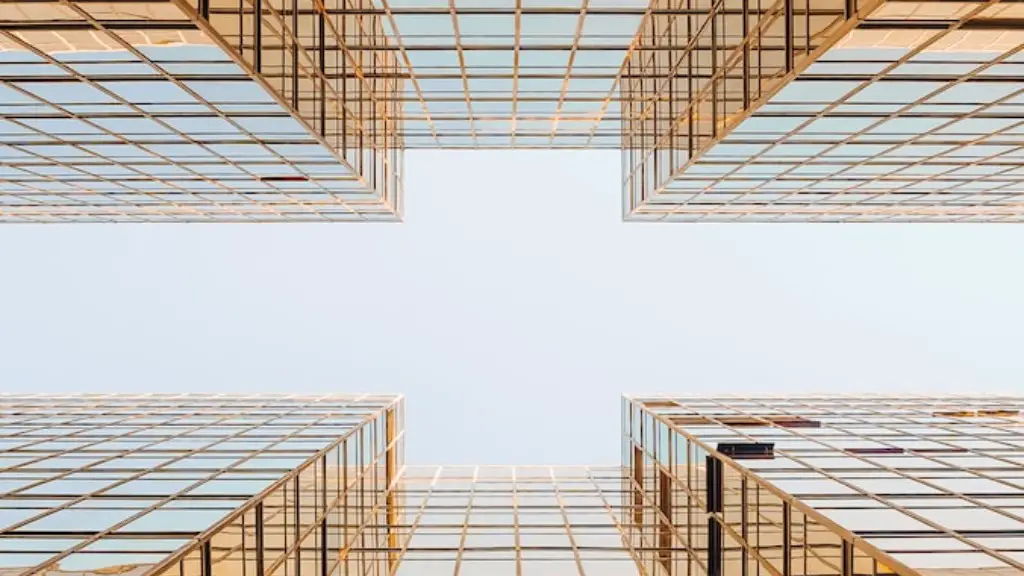1. The Impact of Sustainability on Architecture
We all take for granted the building and structures around us. However, these are constantly in a state of change. Sustainable architecture, also known as green architecture, seeks to reduce the impact of buildings on the environment, by utilizing renewable energy sources such as sunlight, wind, and water. Sustainable architecture not only reduces the environmental impact of buildings and structures, but also provides for a healthier, more comfortable living and working environment.
Sustainably designed building can help to conserve natural resources, and reduce greenhouse gas emissions. Studies have shown that buildings, and their surrounding enviroments, are responsible for 40 % of the world’s energy consumption and a third of greenhouse gas production. In addition, the use of recycled materials, and renewable energy systems, can help to reduce energy and water bills.
An increase in sustainable architecture can also help reduce air and noise pollution, as sustainable building design tends to place priority on natural ventilation, natural light, and use of locally sourced materials. Architects are increasingly exploring new ways to conserve energy, minimize adverse impacts on the environment and unify interior and exterior spaces.
2. What Does Sustainable Architecture Involve?
Sustainable architecture involves the design, construction, and operations of buildings, structures, and public spaces with a view to reduce the environmental impact. This includes the use of recycled or locally sourced building materials, such as timber, stone, and clay; to minimize energy use through passive design techniques such as orientation of windows, shading, and building insulation; and to maximize natural light and ventilation.
Sustainable architecture also seeks to reduce water use, by using harvested rain water for landscaping and re-use of grey water for toilet flushing. Other strategies include use of solar-thermal, wind, and photovoltaic systems for energy production and water heating; construction of green roofs to reduce air pollution and provide natural habitat; and the design of green streets and public spaces to improve neighborhood character and provide local green space.
3. Benefits of Sustainable Design
The benefits of sustainable design are becoming increasingly clear. Sustainably designed buildings can not only help to reduce the environmental impact, but also create healthier and more comfortable living spaces. Research suggests that sustainable architecture can significantly reduce consumption of energy and water, leading to lower energy and water bills.
In addition, sustainable architecture can reduce air and noise pollution, improve air quality and provide better insulation and climate control. Sustainable architecture also has economic benefits, as research suggests that design of sustainable buildings can lead to higher property values, greater occupancy rates and increased rental returns.
4. Challenges of Sustainable Design
Despite the potential benefits of sustainable design, there are also some challenges. Sustainable materials such as green roofing can be more expensive than traditional building materials, and larger, more complex designs such as green roofs may require additional planning time and expertise.
In addition, some green building techniques, such as geothermal heating, may be suitable for some regions and climates, but not suitable for others. In addition, sustainable design techniques such as natural ventilation, thermal insulation and shading may require careful planning, taking into account local climate, building orientation and weather conditions.
5. Making The Transition To Sustainable Architecture
The transition to sustainable architecture can seem difficult at first. However, there are many organizations and resources available to support the transition. Green building rating systems such as LEED, provide valuable guides and tools for assessing and certifying sustainable buildings.
The US Green Building Council provides training on sustainable building strategies and techniques and offers certification courses. Architects and designers can also seek advice from organizations such as the International Sustainable Design Association, which provides guidance on sustainable materials, design techniques and techniques for optimizing energy efficiency.
6. Design Considerations
When designing a building with sustainability in mind, several important considerations need to be taken into account. Firstly, the building must be designed to suit the climate and local environment. For example, buildings in warmer climates should be designed to maximize air flow and natural cooling, while buildings in colder climates should be designed to maximize solar energy.
Other considerations include the design of the interior and exterior layout, taking into account natural lighting, ventilation, and natural materials; use of green roofing, solar panels and geothermal heating; and consideration of the building’s immediate surroundings, such as access to public transportation.
7. Environmental Sustainability Strategies
Sustainability strategies should be incorporated into the design process from the outset. These can include the use of recycled materials, renewable energy systems and green roofs, as well as low impact landscaping, use of natural light and ventilation, and irrigation systems.
In addition, the use of native vegetation, such as trees and groundcover, can help to reduce air and noise pollution and improve air quality. The use of green roofing and geothermal systems can also help to reduce energy bills, while use of rainwater harvesting systems can help to reduce water use and costs.
8. Community Engagement
Community engagement is an important part of sustainable architecture. Designers should consult local communities and seek their involvement in the design process. This includes engaging local stakeholders in initial consultations, and engaging local users in the design of public spaces.
The involvement of local communities not only helps to reduce project costs, but also helps ensure that communities are at the forefront of sustainable development. Engaging local stakeholders also helps to ensure that the project meets the needs of the community, as well as addresses their environmental, economic, and social concerns.
9. Cultural Relevance
A sustainable building must also be culturally relevant. Designers should keep the local context in mind and consider the cultural and historical context of the project. Traditional and vernacular architecture should be respected and incorporated into the design process.
The use of non-traditional and vernacular building materials, in combination with modern materials, can help to ensure a sense of authenticity and cultural relevance. By considering the local cultural context and incorporating it into the design process, designers can help ensure that the building reflects the values, history, and culture of the local community.
10. Education, Awareness, and Training
Education, awareness, and training are all important in making the transition to sustainable architecture. Designers should develop educational resources for local communities and seek their involvement in the design process. Architects, designers, and engineers should also seek training and certification in sustainable techniques and develop an understanding of the principles of sustainability.
By raising awareness of sustainability issues and educating local stakeholders, it is possible to build an understanding and appreciation of sustainable architecture, and to encourage and support the transition to sustainable practices and building.
11. Technological Advancements and Sustainable Design
In recent years, technological advancements have led to significant improvements in sustainable building design. Modern technologies such as Building Information Modelling (BIM) allow designers to create highly detailed models of their projects and to share them with stakeholders. This reduces the need for physical plans and blueprints, while also providing a valuable resource for visualizing the design and improving collaboration.
The use of virtual reality and 3D printing can also greatly improve the design process, providing an immersive environment for exploring and designing sustainable buildings. Research into the potential of smart materials and technologies is also providing exciting potential for the design and construction of more sustainable buildings.
12. Going Forward With Sustainable Architecture
As the risks of climate change become increasing apparent, it is clear that we need to take steps to reduce the environmental impact of our buildings and structures. Sustainable architecture is an important part of this process, and is becoming increasingly important as society seeks to transition to a more sustainable future.
By increasing our understanding of the benefits of sustainable design, by providing education, awareness, resources and support, and by embracing the potential of emerging technologies, we can help ensure that our buildings and structures are built with sustainability in mind, and that our future is built on the principles of sustainability.


